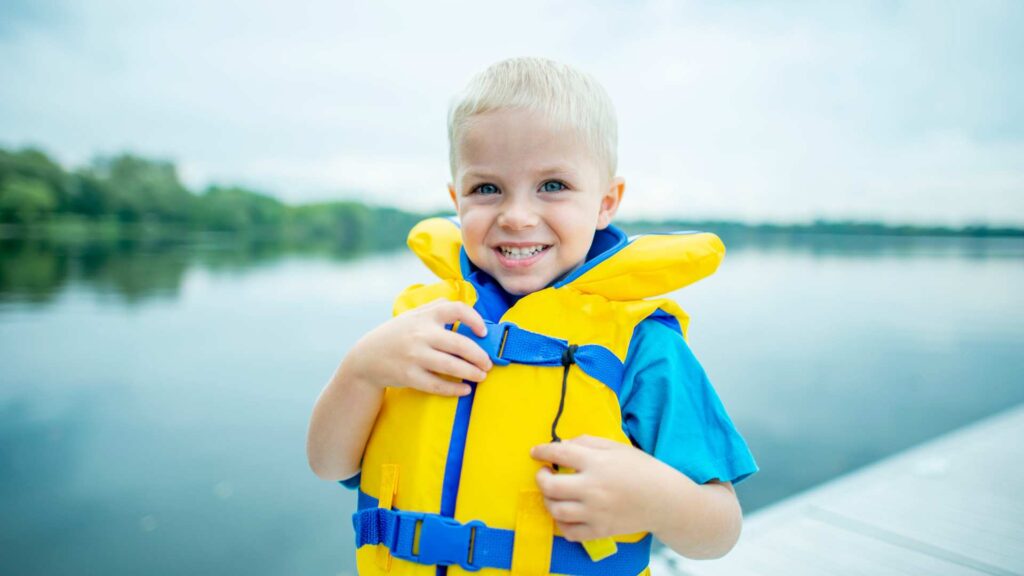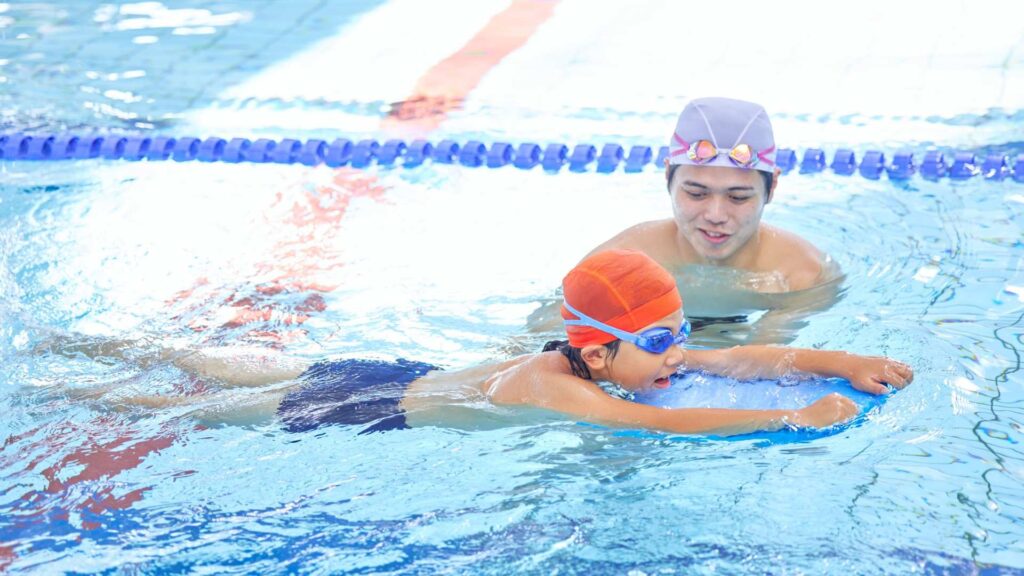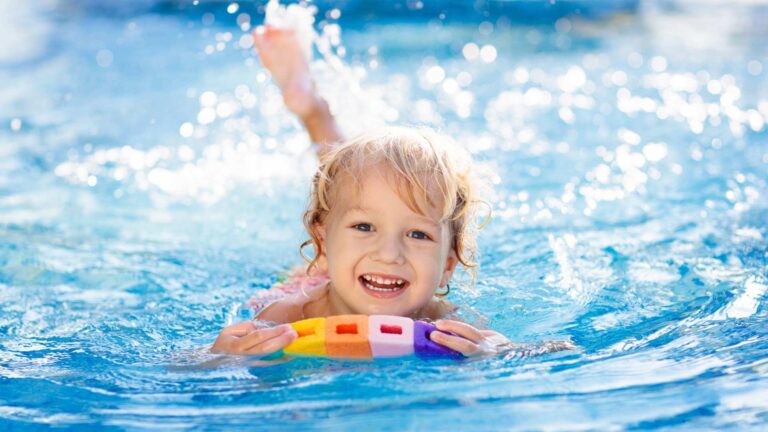Tabla de contenidos
How can we keep children safe around water?
As summer approaches, families across the country start planning beach days, pool parties, and lake trips. It’s a season filled with sunny days, laughter, and water activities that bring joy to everyone. But behind these treasured moments lies an urgent reality: water-related accidents remain a leading cause of preventable death for children. For families of niños con autismo, the risks are even more serious, making swim safety an essential priority.
Every year, accidental drowning claims thousands of lives. From 2020 to 2022, over 4,500 people in the U.S. died from drowning each year, according to the CDC. That is why May marks Water Safety Month, a national initiative that raises awareness about drowning prevention and promotes safer water practices.
If you are asking yourself, “How can we keep children safe around water?” You’re not alone. Many parents and caregivers of children with autism face this concern every day as kids may not recognize danger, wander away, or gravitate toward water. Let’s keep reading this blog by ABA Centers of Florida as we explore helpful strategies for swim safety for children with autism spectrum disorder (ASD).
Why Swim Safety Is Critical for Kids with Autism
The statistics surrounding drowning and autism are deeply alarming. According to the National Autism Association, children with autism are 160 times more likely to die from drowning than their neurotypical peers. Accidental drowning is the leading cause of death for autistic children, and wandering is the most frequent cause of those incidents. In fact, nearly 50% of children with autism wander or tend to elope from a safe environment at some point.
Un estudio publicado en Injury Epidemiology found that most drownings involving children with autism occurred near the home, often in ponds or lakes, typically in the afternoon. The victims, mostly boys between the ages of 3 and 14, wandered off unnoticed. In 73% of cases, wandering was the key factor.
These sobering statistics are not shared to provoke fear but to help families recognize the heightened risk—and to empower them with tools that can prevent tragedy. Swim safety for kids with autism must be viewed as a proactive and necessary component of their care, especially during the summer season.

Understanding the Challenges: Autism and Water Risks
ASD affects how children process information, perceive their environment, and communicate. Many children with autism have sensibilidades sensoriales, unique cognitive styles, or limited danger awareness, which can put them at higher risk near water.
Some of the most common challenges that impact swim safety include:
- Limited danger awareness: Many children on the spectrum do not understand the risks posed by water; they may walk directly into pools, ponds, or lakes without hesitation.
- Fascination with water: Some children feel drawn to water due to its visual or tactile appeal.
- Wandering/elopement: Autistic children may elope from caregivers and enter bodies of water unnoticed.
- Dificultades de comunicación.: Children with limited verbal skills may not be able to call for help or explain if they are in distress.
- Poor motor coordination: Some children with ASD may struggle with body awareness and physical coordination, which can impact their ability to swim safely.
Water Safety Month: A Time to Act

Every May, a coalition of national organizations—including the American Red Cross, National Drowning Prevention Alliance, Pool & Hot Tub Alliance, and National Recreation and Park Association—comes together to promote Water Safety Month. The campaign provides education, resources, and tools to help families stay safe around water.
Launched initially as National Water Safety Week in 2003, the initiative grew into Water Safety Month in 2007. Today, it plays a critical role in leading the national conversation on preventing water-related injuries and fatalities.
For families of children with autism, Water Safety Month is a valuable opportunity to seek training, advocate for inclusion in swim programs, and learn more about strategies for protecting their children year-round.
How to Make Swim Safety a Priority: Practical Strategies for Families
Even though there are significant risks, children with autism can still enjoy a beach vacation or a pool party. There are many effective strategies families can take to protect children with autism and promote safe, confident water experiences:
- Start Swim Lessons Early: Enroll your child in swim-friendly lessons as early as possible. Seek out adaptive programs or instructors experienced in working with neurodivergent children.
- Practice Water Safety Skills at Home: Before entering larger water bodies, teach basic skills like floating, holding breath, and kicking legs in a bathtub or kiddie pool.
- Use Visual Supports: Create social stories, picture schedules, or visual rules to help children understand water safety rules before going to a pool or beach. Check this water safety guide by the Autism Society.
- Secure Water Sources at Home: Install fences with locks around pools and ponds, use pool alarms, and ensure doors are locked and monitored.
- Dress for Visibility: Bright-colored swimsuits and safety gear can help adults spot children quickly in the water.
- Provide Constant Supervision: Never leave a child unsupervised near water. Even short moments of distraction can lead to dangerous situations. Check out the campaign “Phones Down, Eyes Up, ” which showcases the importance of always staying vigilant.
- Practice Emergency Preparedness: Learn CPR and keep rescue equipment nearby when swimming. Make sure all supervising adults know what to do in case of an emergency.
- Use Identification Tools: For children prone to elopement, ID bracelets or tags with contact information can help in emergencies. GPS trackers can also be helpful in high-risk scenarios.
- Prepare Your Child Emotionally: Before visiting a new pool or beach, use videos or stories to show what to expect. Discuss safety rules ahead of time to reduce anxiety and encourage cooperation.
- Create a Plan with Caregivers: Whether your child is at school, camp, or visiting relatives, ensure everyone involved knows the swim safety plan, understands the child’s needs, and is prepared to act.
Supporting Swim Safety Through ABA Therapy

Applied Behavior Analysis (ABA) therapy offers valuable strategies for addressing water safety concerns specific to children with autism. At ABA Centers of Florida, therapists work with families to develop personalized approaches to swim safety based on each child’s unique profile of strengths and challenges.
terapia ABA can specifically target water safety skills through:
- Systematic teaching of safety rules using visual supports and consistent reinforcement that matches the child’s learning style.
- Functional communication training to help non-verbal or minimally verbal children express water-related needs or distress.
- Behavior intervention plans address wandering tendencies by teaching alternative behaviors and reinforcing safety boundaries.
- Parent training that empowers families to implement effective swim safety protocols consistently across environments.
Planning for a Safe Summer with ABA Centers of Florida
En ABA Centers of Florida, we support campaigns like Water Safety Month because it brings attention to an important issue: water safety for children. That’s why we prioritize education, preparation, and individual support for every family we serve.
Through our personalized ABA therapy programs, we help children develop critical life and safety skills, including those related to water awareness and communication.
We invite families to call us at (772) 773-1975, contáctanos en línea, ask questions, and explore how we can support your child’s growth through compassionate, customized care.
Swim safety starts with knowledge, and with the right tools, every child can experience the joy of water safely and have summer fun.








